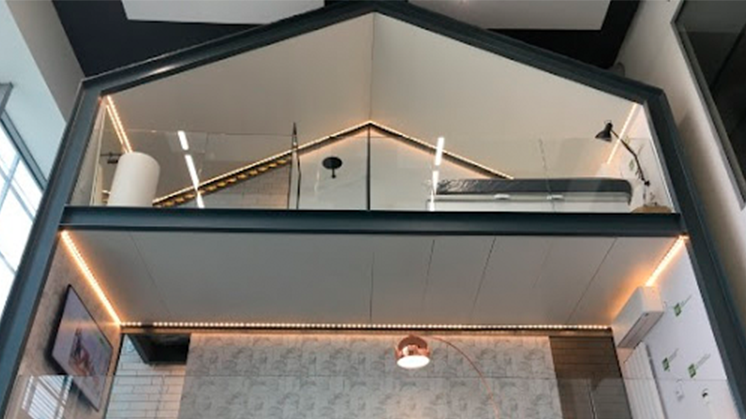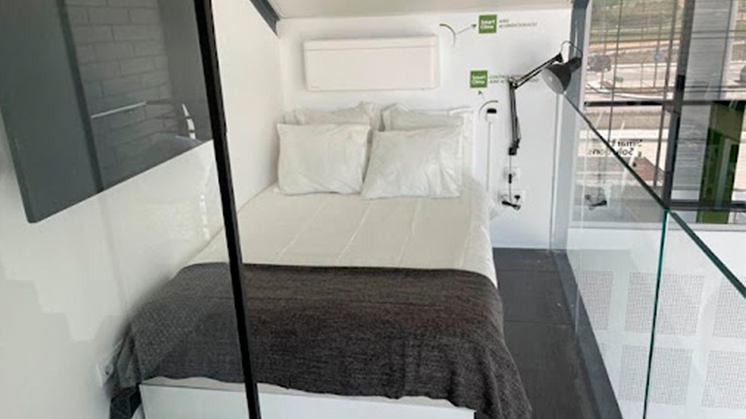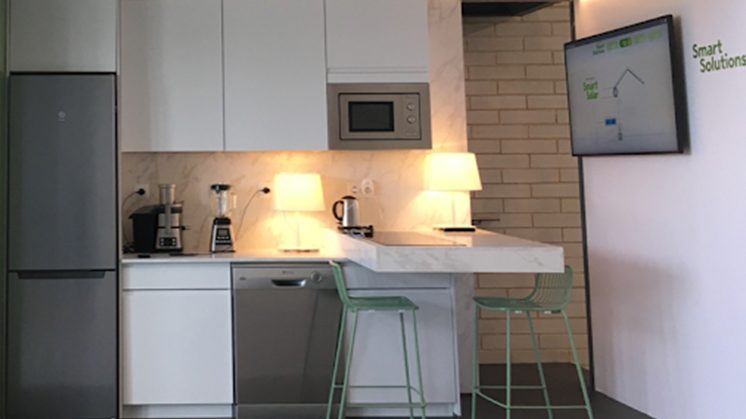Smart Solutions Customer Workshop
Showroom and Smart Solutions Customer Corkshop at the Iberdrola Campus
The Smart Home Showroom at the Iberdrola Campus shows the new functionalities that can be added to a home to achieve economic and energy savings. These projects are part of the Smart Solutions offered by Iberdrola to its customers to mitigate their climate impact and for long-term savings.

Showroom Smart Home




The demonstration of a Smart Home at the Iberdrola Campus in San Agustín del Guadalix serves to show that the energy needs of a home can begin to be met in a self-sufficient way. This simulation is 219.60 square metres in size and includes several rooms of a single-family home with Smart solutions.
What is a smart home?
The Smart Home, included in Iberdrola's Smart Solutions External link, opens in new window. initiative, is a modern concept that combines cost reduction and increased sustainability. The aim of this type of home is to make progress in the connection of devices and appliances, facilitating their remote control and allowing their regulation to be automated to achieve more efficient energy use.
External link, opens in new window. initiative, is a modern concept that combines cost reduction and increased sustainability. The aim of this type of home is to make progress in the connection of devices and appliances, facilitating their remote control and allowing their regulation to be automated to achieve more efficient energy use.
In order to have a home with these features, it is necessary to make a series of installations that entail an initial outlay that is later compensated by the lower monthly electricity costs. The most common, which is closely related to home automation, is the implementation of smart appliances that can be controlled from a smartphone. Their use ranges from elements such as household appliances to others such as sockets. The main function is to create temporary routines for these devices and only switch them on when necessary.
It is also possible to reduce the energy costs of heating and cooling. In this area, one of the most common installations in Smart Homes is aerothermal energy. These types of systems serve as heat pumps, air conditioners and water heaters that extract the ambient energy contained in the air to provide heating in winter, cooling in summer and hot water all year round.
The search for self-sufficiency is another of the pillars of Smart Homes. It is therefore possible to install solar panels on the roof – which allow savings of up to 70 % on energy bills.
In addition, a smart home can include a socket and pole for an electric car. This would serve as a charging point and, thanks to the solar panel located on it, would allow it to be self-sufficient. In addition to reducing energy costs, it helps to eliminate dependence on fossil fuels and their pollution.
The showroom
Iberdrola showcases all these technologies in a showroom that was inaugurated in 2021 by Their Majesties the King and Queen of Spain at the Iberdrola Campus. This house has been used to help internal teams and sales forces learn the advantages that these installations offer potential buyers compared to a housing model that does not have these features. Firstly on an ecological level, but also on an economic level.
This showroom simulates a 54.6 square metre home spread over three floors where different smart solutions can be found to show how they work in a real flat: solar panels, the entire home automation system for the electrical appliances and an aerothermal system. The total height of the house is 9.5 metres.
In front of the house there is a space of 115.50 square metres where there is a charging point for the electric vehicles powered by the energy generated by a solar panel – contributing to the use of renewable energies.
Many of the techniques mentioned above are also used, with the main objective of showing the existing capacity to improve energy consumption and reduce it.

Image of the Smart Home bedroom

Image of the Smart Home kitchen
The importance of sustainability
Smart solutions have a lot to do with the need to create new homes that are sustainable. The urgency to achieve a system that pollutes as little as possible is becoming more and more pressing – and Smart Home systems are helping to achieve this.
The use of solar panels for self-supply is also part of the goal of achieving a sustainable future through the use of renewable energies. The aim is to reduce the consumption of fossil fuels.




